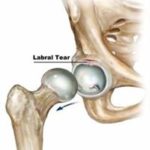Say Goodbye To Sciatic Nerve Pain in Just 10 Minutes With This Natural Method
If you’ve ever felt that sharp, shooting pain running from your lower back down your leg, you know how unbearable sciatic nerve pain can be. But here’s the good news, you can actually ease that pain in just 10 minutes a day using a simple, natural method that doesn’t rely on medication or complicated tools.
This technique focuses on releasing pressure from the sciatic nerve through a combination of gentle stretching, deep breathing, and targeted nerve-gliding movements. These movements improve blood flow, reduce inflammation, and relax the tight muscles that often pinch the nerve, giving you quick relief and helping your body heal naturally.
All you need is a calm space, a yoga mat, and 10 focused minutes. Within that short window, your body begins to relax, your muscles loosen up, and that constant, radiating discomfort starts to fade away. It’s not magic, it’s simply about aligning your body and allowing the nerve to move freely again.
Understanding Sciatic Nerve Pain: What’s Really Happening?

Sciatic nerve pain, or sciatica, occurs when the sciatic nerve, the longest nerve in your body, becomes compressed or irritated. This leads to pain that travels from your lower back to your hips, buttocks, and down one or both legs.
Common causes include:
- Herniated or slipped disc
- Prolonged sitting or poor posture
- Pregnancy-related pressure on the spine
- Muscle tightness, especially in the piriformis
- Degenerative disc disease or spinal misalignment
Left untreated, sciatica can lead to chronic pain, muscle weakness, and limited mobility, but the good news? Natural, non-invasive physiotherapy can often bring relief faster than you expect.
The 10-Minute Natural Method for Fast Sciatica Relief
Here’s the one movement and set of habits that patients at Pain Free Physiotherapy & Chiropractic Clinic swear by. These techniques are safe, quick, and based on professional physiotherapy principles.
1. The One Movement for Instant Sciatica Relief
This technique combines nerve flossing and piriformis stretching, both proven to release tension from the sciatic nerve.
How to do it:
- Sit upright on a firm chair with both feet flat on the ground.
- Straighten the affected leg slowly while flexing your ankle (toes toward the ceiling).
- Hold for 5 seconds, then gently bend the knee back.
- Repeat 10–15 times.
This gentle “flossing” motion glides the nerve through tight muscle tunnels, easing compression and promoting immediate comfort.
Pro tip: Combine this with deep breathing to relax your lower back muscles and improve circulation.
2. Heat and Cold Therapy
- Heat: Apply a warm compress or heating pad to the lower back for 10 minutes.
- Cold: Alternate with an ice pack on the affected leg to reduce inflammation.
The contrast boosts blood flow and calms nerve irritation, ideal before bedtime or after a long day of sitting.
3. Posture Correction and Core Activation
Bad posture is often the hidden culprit behind sciatica. Keep your spine neutral, shoulders relaxed, and pelvis balanced.
Simple 2-minute fixes:
- Adjust your chair height so knees are level with hips.
- Engage your core while standing or walking.
- Use a lumbar support cushion if you work long hours.
These micro-adjustments take seconds but prevent major nerve flare-ups.
4. Guided Physiotherapy Sessions
While home remedies can bring temporary comfort, long-term recovery often needs expert-guided therapy.
At Pain Free Physiotherapy & Chiropractic Clinic, our Delhi specialists physiotherapist design personalized exercise plans focusing on:
- Spinal alignment
- Muscle strengthening
- Nerve decompression
- Electrotherapy or dry needling (if required)
These sessions ensure you’re healing safely, not just masking pain.
What Is the 1-Minute Exercise for Sciatica?
If you’re short on time, here’s a one-minute relief move known as the Seated Glute Stretch:
Steps:
- Sit tall in a chair.
- Cross your right ankle over your left knee.
- Lean forward gently until you feel a stretch in your buttocks and lower back.
- Hold for 30 seconds, switch sides.
This move targets the piriformis muscle, which often presses on the sciatic nerve. Regular practice can keep that nerve calm and pain-free.
When to See a Professional Physiotherapist

While mild sciatica often improves with movement and home care, consult a physiotherapist if:
- Pain persists for more than two weeks
- Numbness or tingling spreads to your feet
- You struggle to walk or sleep comfortably
- Home stretches stop providing relief
Our best physiotherapy clinic in Dwarka provides advanced assessment and personalized recovery programs for chronic cases, combining manual therapy, spinal adjustments, and muscle re-education.
Natural Ways to Prevent Sciatica from Returning
- Stay active daily – Movement keeps the spine flexible.
- Hydrate often – Dehydration affects spinal discs.
- Lift smartly – Always bend your knees, not your back.
- Sleep posture matters – Try lying on your side with a pillow between your knees.
- Stretch before and after work – Especially if your job involves long sitting hours.
Consistency is the secret weapon to staying pain-free.
Why Choose Pain Free Physiotherapy & Chiropractic Clinic, Delhi

We’re not just about temporary relief, we focus on restoring your mobility and lifestyle. Our team includes certified physiotherapists and chiropractors specializing in spine and nerve care.
What sets us apart:
- Modern therapy equipment
- Personalized treatment plans
- Evidence-based, drug-free recovery
- Expert physiotherapists trained in sciatica management
Our approach is simple: target the root cause, not just the pain.
FAQs
Q1. What is the fastest way to relieve sciatic nerve pain naturally?
Gentle stretching, nerve gliding, and heat therapy can provide near-instant relief. Combined with professional physiotherapy, these natural methods can help most patients feel better in minutes.
Q2. Does physiotherapy help with sciatica?
Absolutely. Physiotherapy targets the root cause by strengthening muscles, improving posture, and decompressing the nerve. Clinics like ours in Delhi use a mix of manual therapy and guided exercises.
Q3. What triggers sciatica pain flare-ups?
Long sitting hours, poor posture, sudden twisting, or lifting heavy objects incorrectly are common triggers.
Q4. How do I know if my sciatica is serious?
If pain radiates below your knee, causes leg weakness, or disrupts sleep, seek immediate professional help from a physiotherapist or chiropractor.
Conclusion
Sciatica doesn’t have to be a lifelong struggle. With the right movement, awareness, and expert guidance, relief can be quicker than you think, sometimes in as little as ten minutes. Whether it’s through a 1-minute exercise, home-based therapy, or professional sessions at Pain Free Physiotherapy & Chiropractic Clinic, you can reclaim your comfort and mobility naturally.
So, take the first step today, stretch, breathe, and move toward a pain-free tomorrow.











